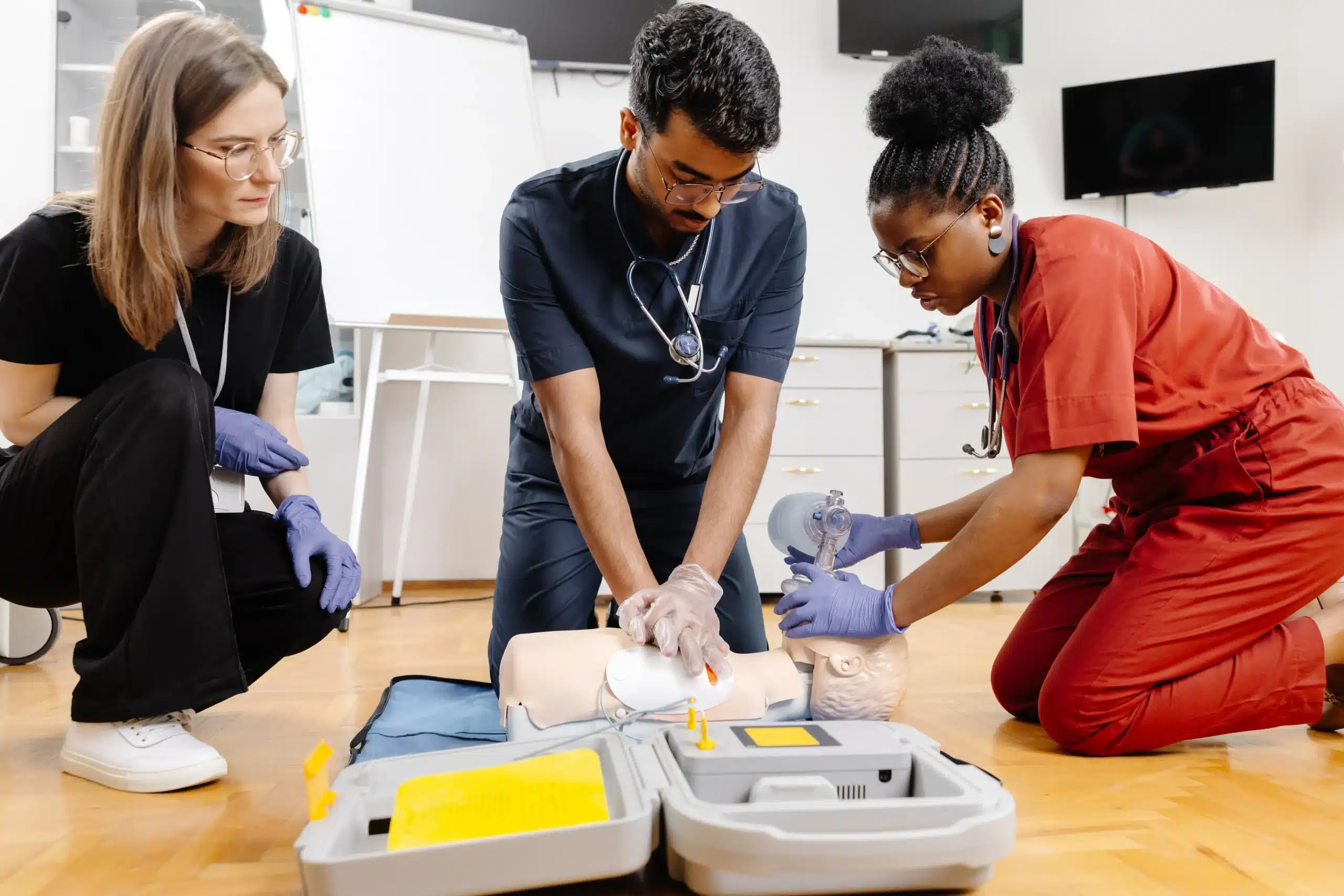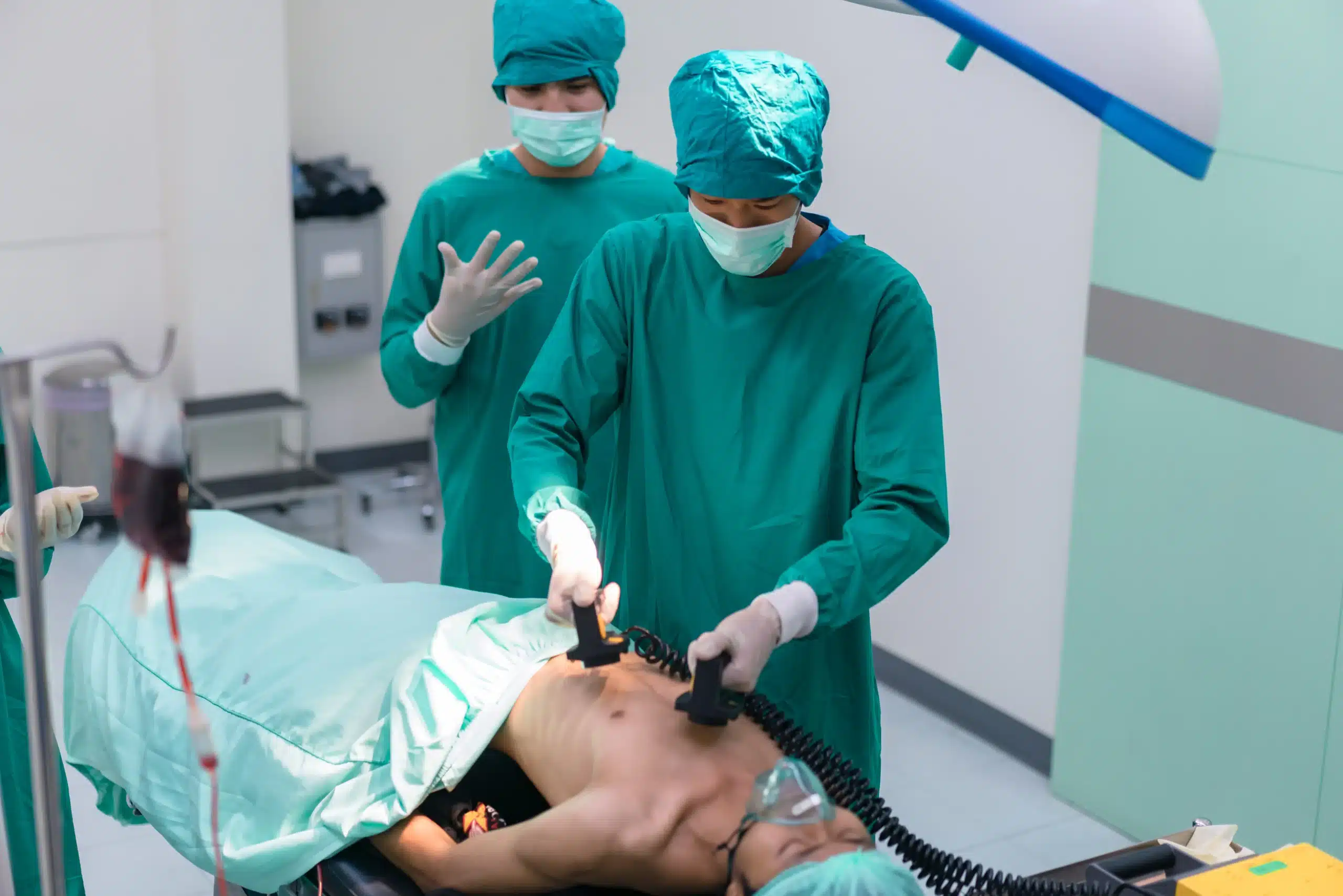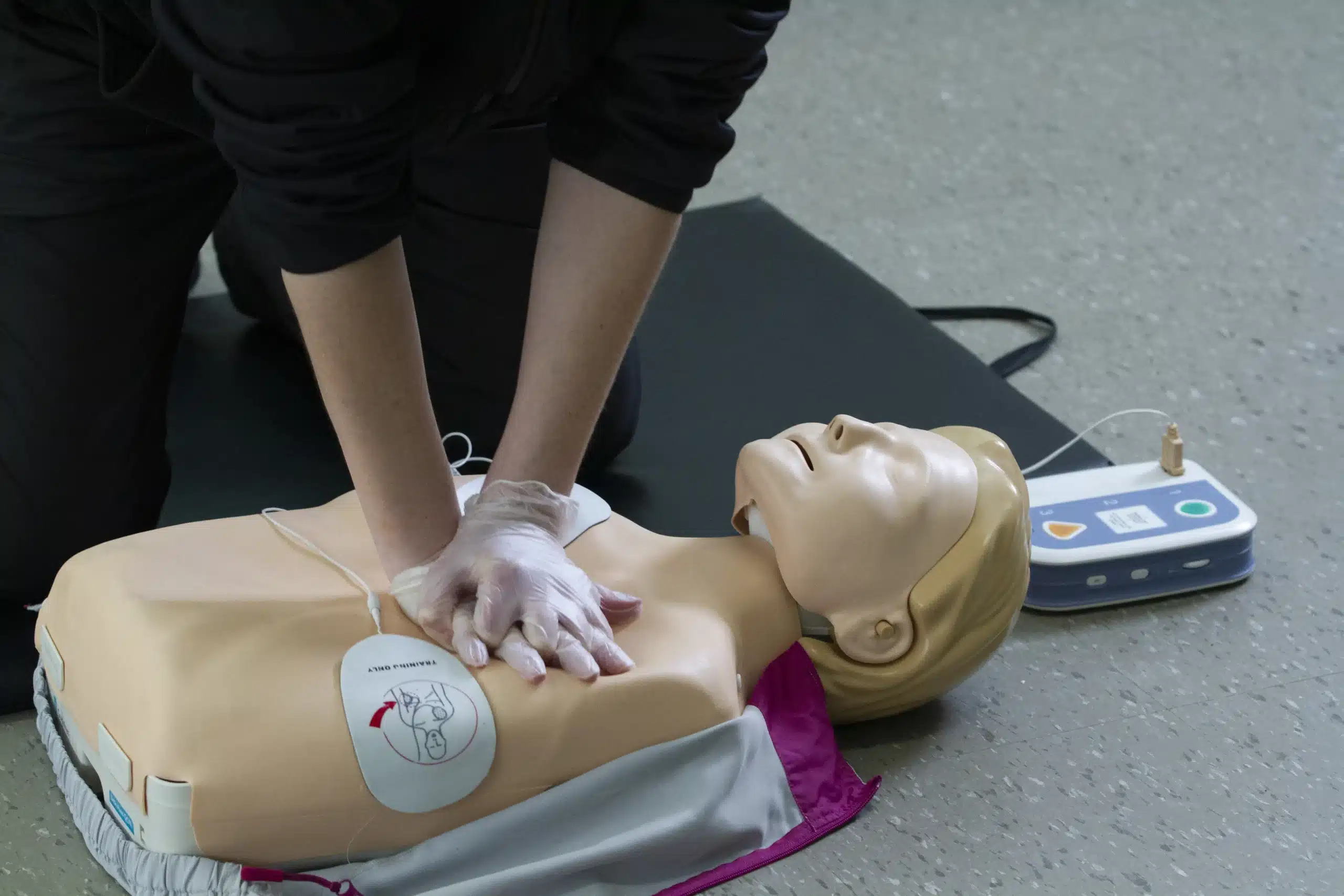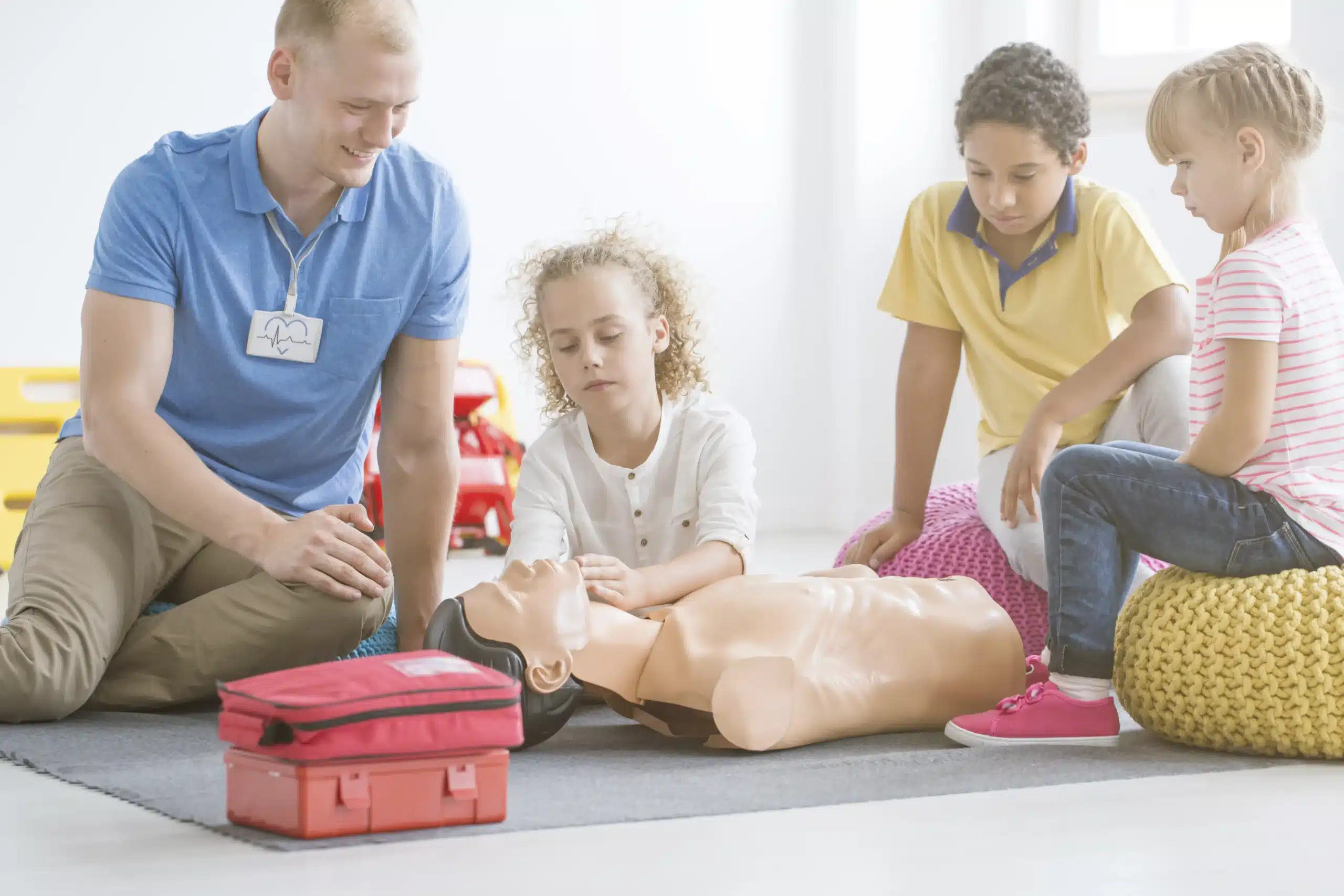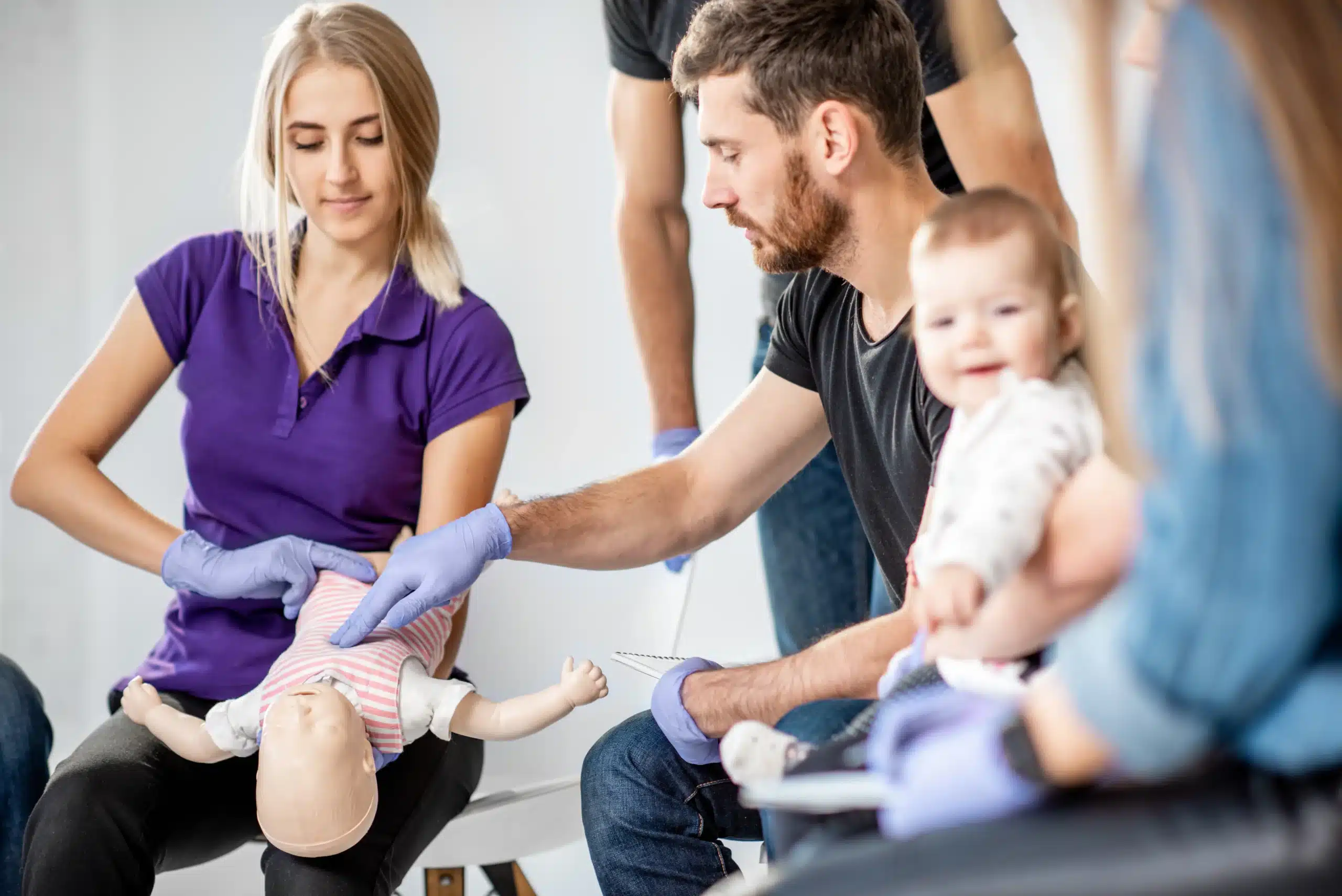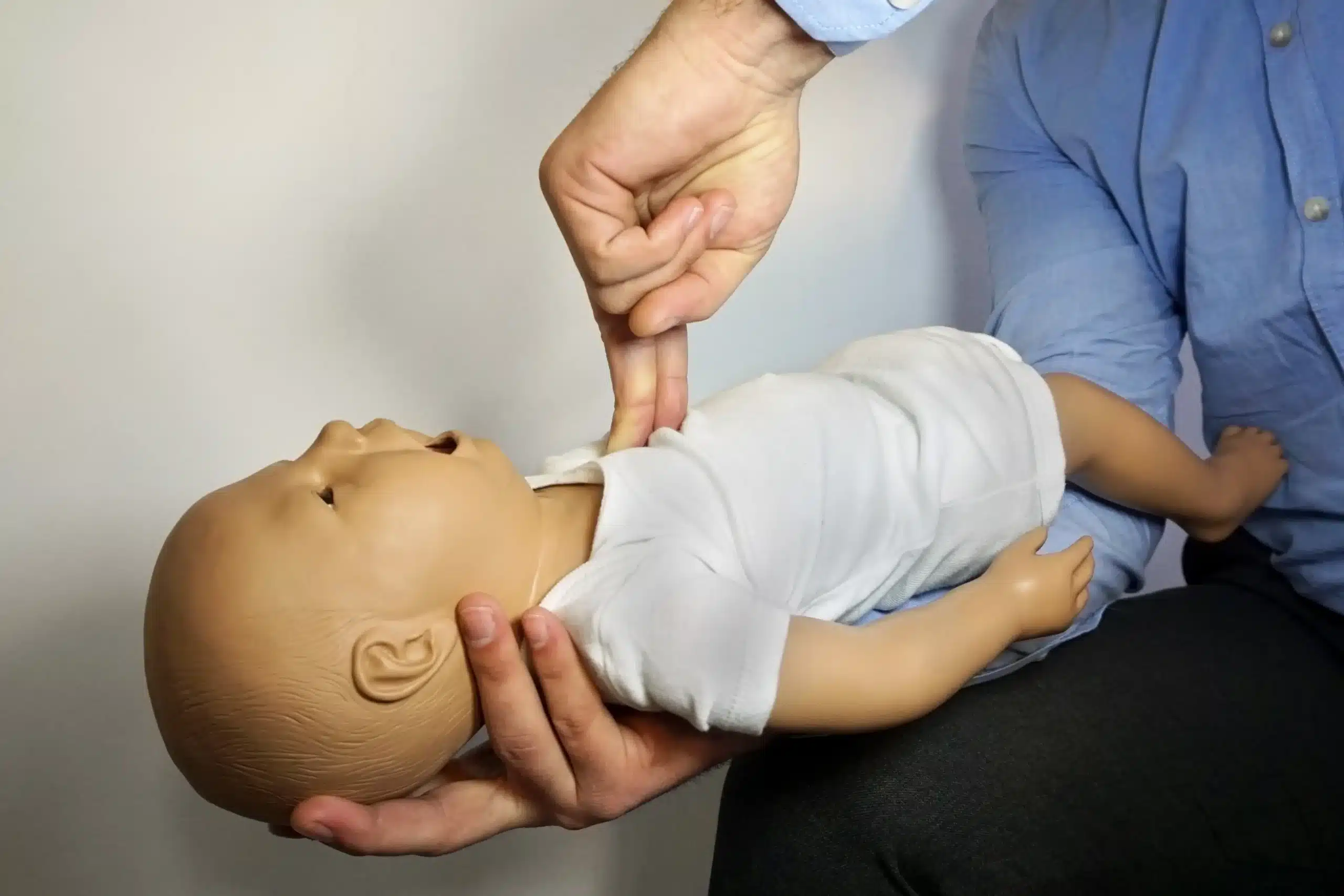As a healthcare professional, your skills are your lifeline—and none are more crucial than Basic Life Support (BLS). Staying current with your BLS certification isn’t just a job requirement; it’s a commitment to providing the best possible care. But between long shifts and demanding schedules, finding the time for recertification can feel like another hurdle. This guide simplifies the process, breaking down everything you need to know about BLS recertification, from understanding the requirements to finding a “bls recertification near me” that fits your busy life. We’ll cover the ins and outs of recertification, explore different learning options, and help you confidently maintain your lifesaving skills.
Key Takeaways
- Maintain your life-saving skills: BLS recertification keeps your skills sharp and ensures you’re ready to respond effectively in critical situations. Explore various course formats—in-person, online, or blended—to find the best fit for your learning style and schedule.
- Choose a provider that meets your needs: Seek out reputable providers like San Ramon CPR Courses or national organizations like the American Heart Association and American Red Cross. Consider factors like cost, schedule, and course format when making your decision.
- Recertification is a valuable investment: It’s not just about renewing your credentials; it’s about reinforcing your confidence and competence in providing essential care. Plan ahead and make recertification a priority to stay prepared and maintain your professional standing.
What is BLS Recertification?
What is BLS & Why Recertify?
Basic Life Support (BLS) equips healthcare providers, public safety personnel, and other professionals with the skills to respond to life-threatening emergencies. It’s the foundation of resuscitation training, covering essential techniques like CPR, recognizing and responding to respiratory and cardiac arrest, using automated external defibrillators (AEDs), and relieving choking. BLS certification is often a job requirement for many roles in healthcare and related fields. Think nurses, physicians, EMTs, lifeguards, and fitness instructors—all positions where these skills can make a critical difference. Your BLS certification is valid for two years. After it expires, there’s no grace period, so staying on top of recertification is essential. Renewal involves completing a recertification course and passing an exam to demonstrate continued competency.
Why Stay Current with BLS Skills?
Maintaining current BLS skills isn’t just about checking a box for your job; it’s about ensuring you can confidently and effectively provide care when it matters most. Regularly refreshing your skills ensures you’re up-to-date on the latest guidelines and protocols, which can change periodically. Consistent practice through recertification courses helps reinforce these skills, building muscle memory and improving your response time in real emergencies. Beyond the technical skills, staying current with BLS demonstrates your commitment to patient safety and high-quality care. It also fulfills employment requirements and maintains your professional standing. Recertification courses offer a comprehensive review of core concepts, hands-on practice, and skills assessment, giving you the confidence to act swiftly and skillfully in critical situations.
Find BLS Recertification Courses Near You
Finding the right BLS recertification course shouldn’t be a hassle. This section helps you explore your options, from convenient local classes to online learning. We’ll also cover what to look for in a quality course.
Where to Find Local BLS Recertification
You have several options for finding BLS renewal courses near you. Dedicated CPR training providers like San Ramon CPR Courses offer various courses, including BLS recertification, often with flexible schedules and convenient locations. Check if local hospitals and clinics offer BLS recertification classes, as they frequently provide training for their staff and the community. You can also explore community centers, fire departments, and other organizations that might host BLS courses.
Online vs. In-Person Recertification
Deciding between online and in-person BLS recertification depends on your learning style and schedule. Online recertification offers flexibility, allowing you to learn at your own pace and from anywhere with an internet connection. However, in-person classes provide hands-on practice and direct interaction with instructors, which can be beneficial for mastering essential skills. Some providers, including San Ramon CPR Courses, offer blended learning, combining online coursework with in-person skills sessions. This approach gives you the convenience of online learning and the practical experience of hands-on training. Consider which format best suits your needs.
Evaluate Course Quality & Accreditation
When choosing a BLS recertification course, prioritize quality and accreditation. Look for courses that follow the latest American Heart Association guidelines and are taught by experienced, certified instructors. Smaller class sizes can offer more personalized attention and feedback. Check if the course includes hands-on practice and uses up-to-date equipment. Convenient locations and flexible scheduling can also make the recertification process smoother. Reading reviews and testimonials from previous students can give you valuable insights into the quality of instruction and the overall learning experience. Ensure the provider is accredited by a recognized organization, like the American Red Cross, to guarantee you receive a valid and respected certification. By carefully evaluating these factors, you can select a BLS recertification course that meets your needs and equips you with the skills to provide effective care.
Course Formats & Time Commitment
Choosing the right BLS recertification course depends on your learning style, schedule, and preferences. Let’s explore the different formats available and their typical time commitments.
In-Person Classes
In-person BLS recertification courses offer hands-on training essential for mastering life-saving techniques. This format allows for immediate feedback from instructors, enhancing the learning experience and building confidence. Providers like San Ramon CPR Courses offer convenient in-person classes tailored to meet participant needs. You’ll work with training manikins and practice skills in a realistic environment, solidifying your understanding of BLS procedures. This direct interaction with instructors and peers creates a supportive learning environment ideal for asking questions and receiving personalized guidance.
Online & Blended Learning
Online learning offers flexibility and convenience, making it an attractive option for busy professionals. You can complete the coursework at your own pace, fitting it around your schedule. Some providers, like ACLS Medical Training, offer 100% online BLS recertification courses that include all necessary study materials. Blended learning combines online modules with in-person skills sessions, offering a balance of flexibility and hands-on practice. This format allows you to learn the theoretical concepts online and then demonstrate your skills in a supervised setting. This hybrid approach caters to diverse learning styles and provides a practical application of online knowledge.
Typical Course Length
While the duration of BLS recertification courses can vary, most classes typically last between 2.5 to 4.5 hours. This time commitment ensures participants receive comprehensive training while remaining mindful of busy schedules. Remember that BLS certification is valid for two years, necessitating regular recertification to stay current with the latest guidelines and techniques. Factor this into your planning to maintain your credentials and provide the highest quality care. Staying up-to-date with your certification ensures you’re equipped with the most current knowledge and skills to respond effectively in emergency situations.
Costs & Discounts
Knowing how much BLS recertification costs helps you budget and avoid overspending. This section breaks down typical expenses, additional fees to watch out for, and potential opportunities to save.
Average Course Costs
BLS recertification courses are generally affordable. Initial BLS certification typically costs around $90, while renewal is usually around $60 per person. Keep this in mind as a benchmark when comparing providers. Be wary of providers charging significantly more.
Additional Fees
While the base cost of BLS renewal covers the core training, some providers may have extra fees. These can include study materials, exam fees, or other add-ons. San Ramon CPR Courses offers transparent pricing, so you know exactly what’s included upfront. Many providers, including ACLS Medical Training, offer online recertification courses where study materials are included. This can be a convenient and cost-effective option.
Group Discounts & Promotions
If you’re certifying a group, such as colleagues or friends, ask about discounts. Many training centers, including San Ramon CPR Courses, offer reduced rates for group bookings. This can be a great way to save and make training more accessible. Look for providers like Pleasanton CPR Classes and Berkeley CPR Classes, which are known for their reasonable pricing and comprehensive course packages. They often include everything you need, from online coursework and skills tests to your official certification card.
Prerequisites & Eligibility
Before signing up for BLS recertification, double-check that you meet the requirements and have the necessary documentation. This will save you time and ensure a smooth recertification process.
Recertification Criteria
The primary prerequisite for BLS recertification is holding a current or recently expired BLS provider card. Most providers, including the American Red Cross, allow recertification within 30 days of the expiration date. Check with your certifying organization, such as the American Heart Association, for their specific guidelines. Some providers may offer a grace period, but it’s always best to renew before your card expires to avoid any lapse in certification.
Required Documents
While specific documents may vary slightly depending on the provider, you’ll generally need your current or expired BLS provider card. This card verifies your previous training and allows the instructor to confirm your eligibility for recertification. If you can’t locate your card, contact your original certifying organization or use their online resources to verify your certification status. For instance, Save A Life CPR suggests checking your card, using the AHA’s online tool, or contacting AHA customer service.
Recertification Time Frame
BLS certification is typically valid for two years. Plan to recertify before your card expires to maintain your credentials. You can usually take a BLS renewal course up to 30 days after your certification expires, offering a small window if you miss your initial renewal date. Some providers may extend this grace period up to 60 days, but confirming the exact timeframe with your chosen provider is essential. Don’t wait until the last minute—scheduling your recertification in advance ensures you meet the deadlines and maintain your BLS skills.
What to Expect During Recertification
Recertification is designed to refresh your essential lifesaving skills and knowledge. It’s a straightforward process, and knowing what to expect can make it even smoother. Here’s a breakdown of what your BLS recertification will entail:
Course Content & Skills
BLS recertification courses cover core life support techniques, starting with high-quality CPR for adults, children, and infants. You’ll also review how to use an automated external defibrillator (AED) and practice basic airway management techniques. These skills are crucial for responding effectively in a medical emergency. Expect a combination of interactive learning, demonstrations, and practice scenarios. San Ramon CPR Courses follows the latest American Heart Association guidelines to ensure you’re equipped with the most current knowledge and techniques.
Assessments
Your BLS recertification will involve assessments to confirm your competency. Typically, this includes a written exam and a practical skills test. The written portion covers the key concepts and protocols of BLS, while the practical test requires you to demonstrate your skills in CPR, AED use, and other essential techniques. Your instructor will guide you through the process and provide feedback. Remember to schedule your in-person skills check promptly to avoid delays in receiving your updated certification.
Certification Renewal
Once you’ve successfully completed the course and passed the assessments, you’ll receive your updated BLS certification. Many providers, including San Ramon CPR Courses, offer digital certificates, which provide easy access to your credentials and training history. These certifications are typically valid for two years. BLS recertification is often quicker than initial certification, especially with blended learning options, making it convenient to maintain your skills and qualifications.
Choose the Right BLS Recertification Provider
Picking the right BLS recertification provider is key to a smooth and valuable learning experience. It’s more than just checking a box; it’s about maintaining your lifesaving skills and confidence. Here’s how to find the perfect fit:
Factors to Consider
When selecting a BLS recertification provider, think about what works best for you. Consider your learning style. Do you thrive in a hands-on, in-person setting? Or do you prefer the flexibility of online learning? Also, factor in your schedule and budget. Different providers offer various formats—like in-person, online, or blended courses—which can significantly impact your learning experience. Some providers, like San Ramon CPR Courses, offer convenient weekend or evening classes to accommodate busy professionals.
Compare Providers
Don’t just jump at the first option you find. BLS renewal course fees can vary based on the training provider, the course format, and any included extras like study materials or exam fees. Take the time to compare these aspects to find a provider that aligns with your needs and budget. Comparing course costs and schedules can help you make an informed decision, ensuring you choose a provider that offers good value. Look for reputable training providers known for quality instruction.
Read Reviews & Testimonials
Real experiences speak volumes. Reading reviews and testimonials can offer valuable insights into the quality of training different providers offer. Did past participants find the instructors engaging and knowledgeable? Was the course content clear and comprehensive? Personal recommendations can also be helpful. If a colleague recently completed a BLS certification course and had a positive experience, they might recommend the same provider to you. This firsthand feedback can give you a clearer picture of what to expect.
Top BLS Recertification Providers
Finding the right BLS recertification provider is key to a smooth and valuable learning experience. Here are a few reputable options to explore:
San Ramon CPR Courses
San Ramon CPR Courses is a woman-owned American Heart Association Training Center offering a variety of lifesaving courses, including BLS renewal, ACLS, PALS, and First Aid. They prioritize high-quality instruction and convenient scheduling, with classes offered daily throughout San Ramon and nearby cities. For busy professionals, their focus on affordability and flexible scheduling makes them a practical choice. Learn more about their BLS renewal courses.
American Heart Association
The American Heart Association (AHA) sets the standard for CPR and emergency cardiovascular care. Their BLS certification course provides comprehensive training in essential lifesaving techniques for healthcare providers. You can find AHA-certified training centers and instructors through their website. AHA certification is widely recognized and respected in the medical field.
American Red Cross
The American Red Cross also offers BLS certification courses. They provide a two-year digital certificate upon successful completion, giving you easy access to your certification and training history. The Red Cross is a well-respected organization known for its commitment to health and safety training.
National Safety Council
The National Safety Council is a trusted source for safety training and resources. They offer BLS recertification courses that meet industry standards. Explore their website for more information on course availability and formats.
ProTrainings
ProTrainings provides a variety of online and in-person BLS recertification courses. Their flexible learning options accommodate different schedules and preferences. See if their programs are a good fit for you by visiting their website.
Health & Safety Institute (HSI)
HSI offers BLS recertification courses compliant with OSHA and other regulatory standards. They are a reputable provider of various health and safety training programs. Learn more about their BLS recertification options on their website.
Related Articles
- BLS Certification in San Ramon: Your Guide – San Ramon CPR Classes
- BLS Certification in Danville: Your Guide – San Ramon CPR Classes
- BLS Renewal in San Ramon: Fast & Affordable – San Ramon CPR Classes
- BLS Courses in Dublin: Your Complete Guide – San Ramon CPR Classes
- Basic Life Support (BLS) in San Ramon: A Practical Guide – San Ramon CPR Classes
Frequently Asked Questions
How often do I need to recertify my BLS skills? BLS certification is valid for two years. To maintain your skills and credentials, you should recertify before your current certification expires. Some providers offer a short grace period, but it’s best to plan and recertify on time.
What’s the difference between online and in-person BLS recertification? Online BLS recertification offers flexibility, allowing you to complete the coursework at your own pace and from anywhere with internet access. In-person classes provide hands-on practice, direct interaction with instructors, and real-time feedback. Blended learning combines the convenience of online learning with the benefits of in-person skills sessions. Consider your learning style and schedule when choosing the format that suits you best.
How much does BLS recertification cost? BLS recertification typically costs less than initial certification. Expect to pay around $60, though prices can vary depending on the provider and any additional materials or fees. Inquire about group discounts if you’re recertifying with colleagues or friends.
What if I can’t find my BLS provider card? If you can’t locate your BLS provider card, contact the organization that initially certified you. They can help verify your certification status and potentially issue a replacement card. Some organizations also offer online verification tools.
How can I find a reputable BLS recertification provider near me? Start by searching online for “BLS recertification near me.” Look for providers affiliated with recognized organizations like the American Heart Association or the American Red Cross. Check reviews and testimonials to gauge the quality of instruction and the overall learning experience. Consider factors like course format, schedule, location, and cost when making your decision.
